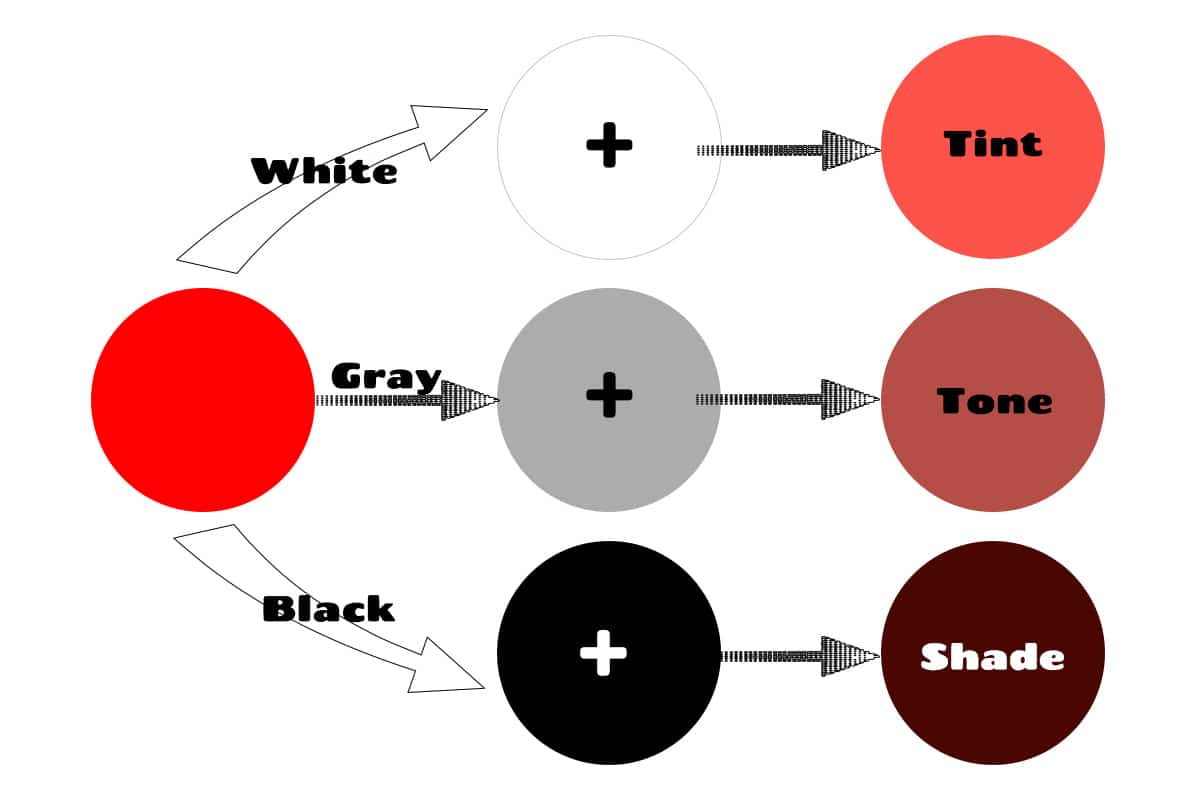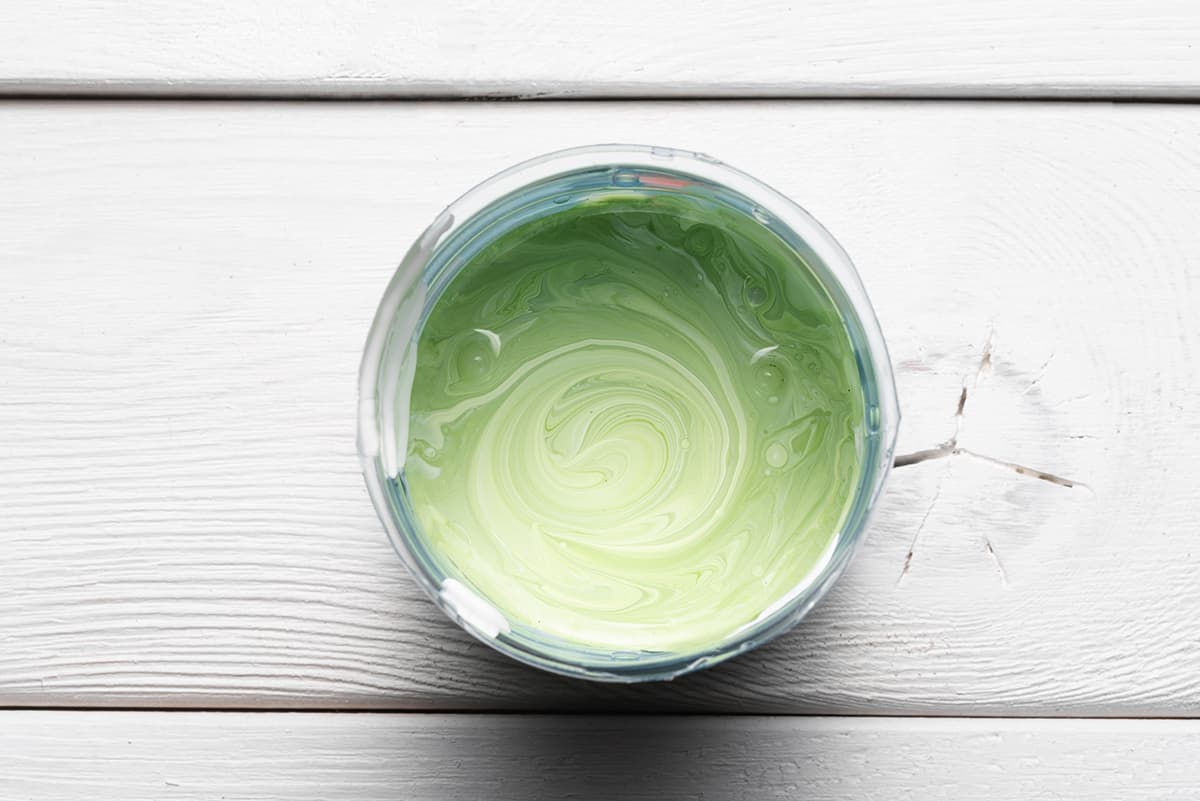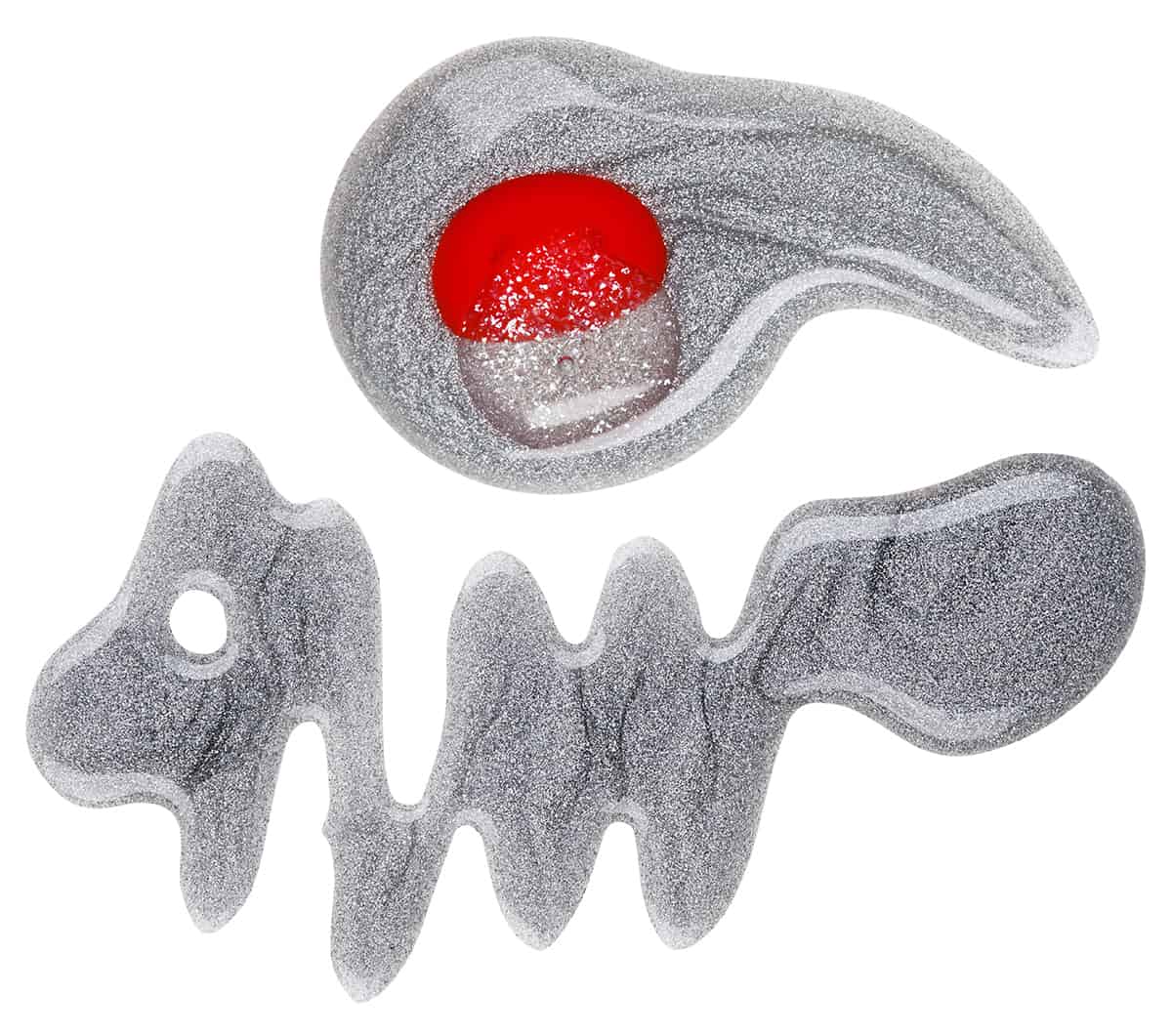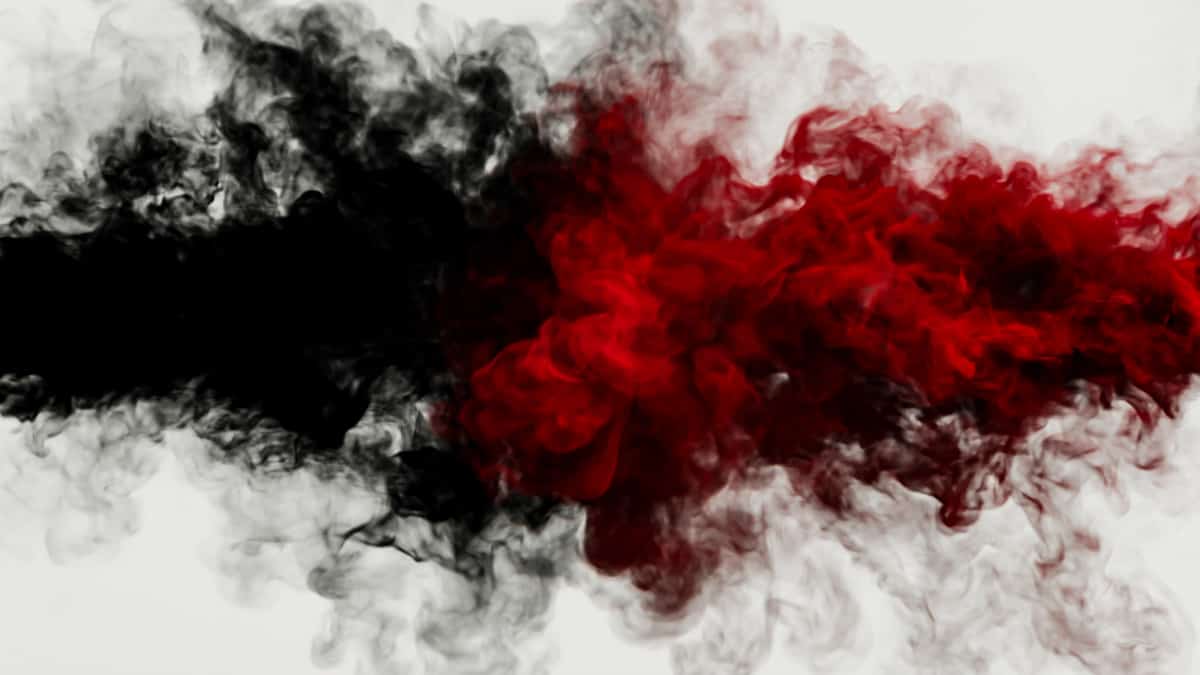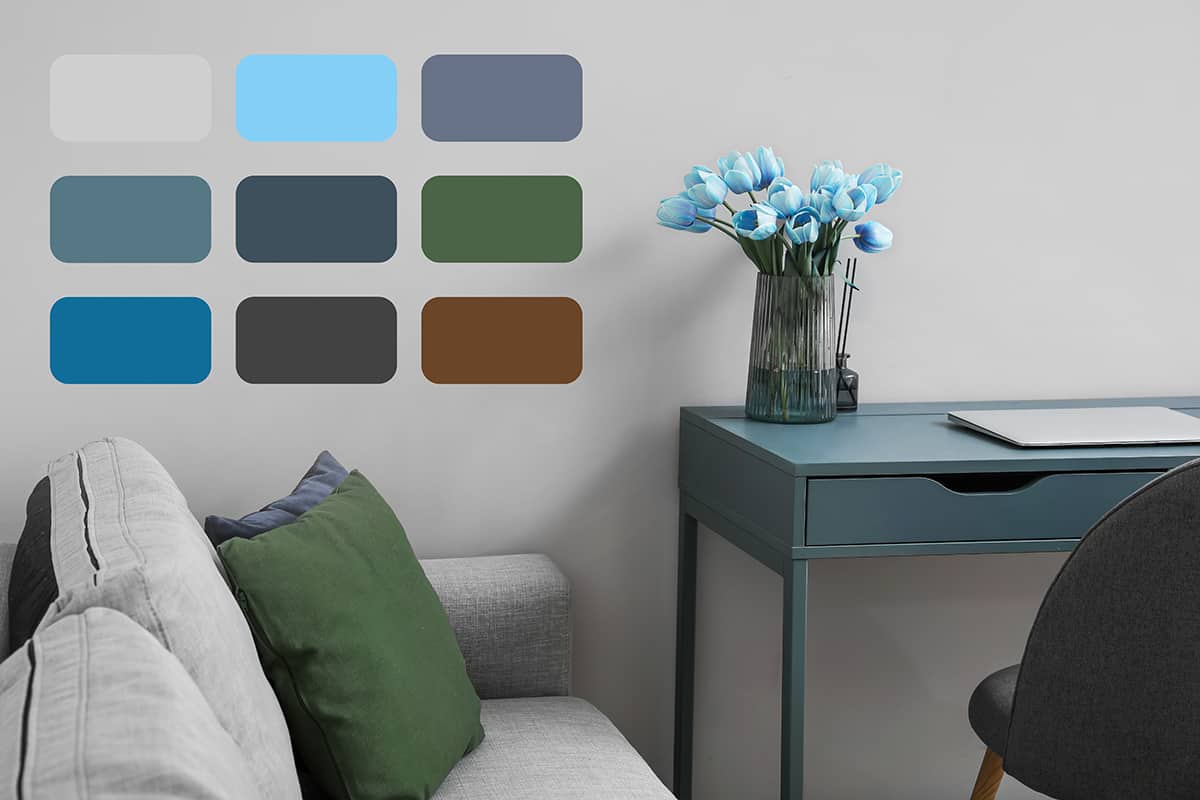Tints, tones, and shades are terms you’ll hear often if you’re involved in anything that uses color theory. Artists, fashion designers, and interior designers will all be familiar with the impact of tints, tones, and shades on color schemes and on the energy they create.
Here we explain what each of these terms means and how they relate to each other. Gaining a better understanding of tints, tones, and shades will be helpful if you’re looking to choose a new paint color for a room or getting involved with any aspect of home decor design.
Overview of Tints, Tones, and Shades
Tints, tones, and shades are types of colors that are made by adding white, gray, or black to pure color pigments. Adding white to color will create a tint, adding gray will create a tone, and adding black will create a shade.
You can add varying amounts of white, gray, or black to achieve different degrees of tint, tone, and shade.
What is Tint?
In its purest form, a tint is simply any pure color from the color wheel that has been mixed with white. The resulting tint will be the same hue but lighter, depending on how much white has been added. To achieve a tint, choose a color from the color wheel, such as blue, and mix it with white. Any color that results from this combination can be referred to as a ‘tint’.
Technically, a true tint can only be made by mixing a color with white. Tints should not contain any gray.
Sometimes, the word ‘tint’ is used more loosely when lighter colors have been created that don’t meet the specific rules of a tint. For example, some artists might mix a color with off-white or a very pale gray to get a more complex final color, and these could also be referred to as tints.
What is Tone?
A tone is a color that has been achieved by mixing any true color with gray. The gray that is used to achieve a tone must be a true gray in that it is purely made up of a mixture of black and white. Many shades of gray these days are warm grays that feature a hint of beige or cool grays that have a blue undertone, but for a true tone, you will need to use a true gray.
The darkness or lightness of the gray can vary to any degree, and when mixed with a true color it will still be considered to be a tone. For example, you could mix a light gray, made with five parts white to 1 part black, with green, and this would give you a light green tone.
You could mix a dark gray, made from 5 parts black to 1 part white, with green, and this would give you a dark green tone. Both colors will have been created using a true gray, and therefore they can both be called tones.
The purpose of a tone is to find a more toned-down version of the original color. This makes the color more subtle and, in most cases, more palatable to the human eye. Most paint colors you see today are tones of some sort.
What is Shade?
A shade is achieved by mixing black with any pure color pigment, and the result is a darker version of the original color.
For example, you could add a drop of black to blue paint to get a dark blue color, and as you continue to add more drops of black, the blue shade will get darker and darker. When making a shade, the same rules apply as when you are making a tone or a tone, in that the black you use for altering the original color should be pure black.
If the black has any undertones, then this is going to affect the eventual color, and it won’t technically be a shade in the truest sense of the word. That being said, many artists will cheat and use warm blacks with a hint of brown or cool blacks with a hint of blue to create more complex shade colors.
What is the Purpose of Tints, Tones, and Shades?
Tints
The purpose of making a tint is to maintain the same color hue while making it lighter. Often, when white paint is added to a pure color pigment, the color will appear instantly brighter. Interestingly, this is not actually the case.
Adding white to a color pigment can only make it lighter, not brighter, but the presence of white in a pure color pigment allows it to reflect light which can create the effect of it seemingly looking brighter. The more white that is added to a pure color pigment, the lighter it will become.
Tints can be useful in home decor if you want to create a colorful and uplifting space while still ensuring it doesn’t feel bright and overstimulating. The addition of white retains the same color but makes it lighter.
How to Make a Tint
The way to make a tint will depend on how light you want the tint to be. A tint is made by mixing a pure color pigment with white. If you are trying to achieve a very light color, then it is best to start with a pot of white paint and gradually add drops of your color pigment.
If you only want your final color to be marginally lighter, then instead, start with a pot of your color pigment and gradually add white to it. After each drop is added, mix your paints together and assess the results until you’re satisfied with the color.
Tones
The purpose of making a tone is to create a more dull version of the original color. This tones down its brightness, making it a more muted and overall more subtle color. Tones are more pleasing to the eye because they require less adjustment and therefore are easier to be around. This is one of the reasons why tones are popular as paints in interior decorating. Tones can be light or dark.
How to Make a Tone
A tone can be created by mixing any pure color pigment with gray. Dark grays mixed with a color will result in a muted dark-toned color, and light grays mixed with color will create a muted light-toned color.
Medium grays added to a pure color pigment will not make the color any lighter or darker but instead will just tone down the vibrancy. The extent of the tone you require will affect how you make it.
First, you will need to start by making your gray by mixing black and white. If you plan to both lighten and tone down a color pigment, make a light gray by mixing a large amount of white with a small amount of black.
To darken and tone down a color, mix a large amount of black with a small amount of white to create a dark gray. If you want to maintain the level of the color but lower the brightness, then a medium gray can be used with a combination of 1 part white to 1 part black.
Once you have the correct gray, you can add small amounts to your pot of color pigment, gradually mixing it in to observe the results. By adding gray to your color pigment, the color will become toned down. If, instead, you want an extremely toned-down paint, it would be best to add drops of color pigment to your pot of gray paint.
Shades
The purpose of a shade is to create a darker version of a color. The hue will stay the same, but the overall color will be darker and more shadowy. Shades are created by adding black to a color pigment. The resulting colors are popularly used for paints in home decor because they create depth and intimacy in a room.
How to Make a Shade
You can make a shade by adding pure black to any pure color pigment. The amount of black you add is going to affect how dark the shade gets, of course, with more black giving you a darker shade than if a slighter amount of black is used.
When making a shade it is usually best to start with the pot of color pigment and add drops of black gradually. This is because even a small amount of black can drastically alter the shade, and if your resulting color ends up too dark it’s very hard to reverse it. Instead, work slowly; it is always easier to add more black than to try to remove it.
The exception to this is if you are trying to achieve an extremely dark shade, for example, a shade of green that is so dark it will appear black in some lights. In this instance, you may prefer to start with a pot of black paint and add green to it.
